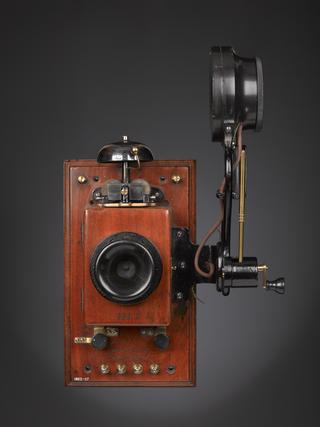
Experimental microphones with carbon pencils and cups, 1878-1890
- maker:
- David Edward Hughes

Three experimental microphones consisting of carbon pencils resting in carbon cups, probably made by David Edward Hughes, England, 1878-1890.
The development of the microphone owes much to David Edward Hughes (1831-1901). Building on the work of Willoughby Smith and Sir William Thomson, Hughes attempted to detect changes in the resistance of wire with sound. He discovered that these changes occurred only when his stretched test wire broke and when he touched the ends together. He found that light but constant pressure was the only essential and that pieces of carbon in light contact worked best. Hughes did not patent his discoveries, meaning that subsequent inventors were able to make use of them without giving Hughes the credit.
Details
- Category:
- Telecommunications
- Object Number:
- 1922-150
- Materials:
- wood (unidentified), wax, copper (alloy), lead (metal) and carbon
- Measurements:
-
overall: 100 mm x 200 mm x 100 mm, .13 kg
- type:
- microphone
- credit:
- Executors of the late Anna C. Hughes




